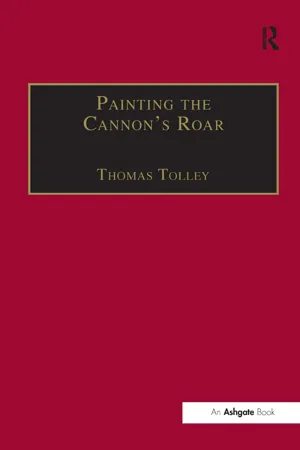Notes to Chapter 1
1. Aristotle, De sensu, III, 439b–440a. Aristotle’s analogy between sight and sound was based on notions of light and dark within a single colour, rather than a range of colours.
2. Aristotle, Metaphysics, 980a22 ff.; De sensu, III, 437a4–12. Plato, Timaeus,
3. Aelian, Varia historia, 2.44. For commentary on this passage, see J.J. Pollitt, The Ancient View of Greek Art: Criticism, History, and Terminology (New Haven, 1974), 201, 205.
4. For St Gregory: J.-P. Migne, Patrologia Latina, lxxvii (1862), cols 1027–28. For comment: G.R. Owst, Literature and Pulpit in Medieval England, rev. edn. (London, 1961); C.M. Chazelle, ‘Pictures, Books and the Illiterate: Pope Gregory I’s Letters to Serenus of Marseilles’, Word and Image, 6 (1990), 138–53.
5. For discussions of St Thomas Aquinas’s views on music, see: Herbert M. Schueller, The Idea of Music: An Introduction to Musical Aesthetics in Antiquity and the Middle Ages (Kalamazoo, Mich., 1988), 382–88; Umberto Eco, The Aesthetics of Thomas Aquinas, trans. Hugh Bredin (London, 1988), 130–36.
6. Mosche Barasch, Theories of Art from Plato to Winckelmann (New York, 1985), 98.
7. In the later Middle Ages, looking at an altarpiece while listening to a sung mass would be an example of this. In the twelfth century, possibilities for sound and vision coming into proximity with each other is demonstrated through the interests of Hildegard of Bingen. Hildegard’s famous visions were turned into manuscript illuminations; she also provided musical settings for her sacred dramas. In both of these examples, however, it is clear that the main point of contact between sight and sound is a text.
8. For example, in the Bestiaires d’ amours by Richard de Foumival (d. 1260), memory is said to have two doors, sight and hearing. An early fourteenth-century illumination of this idea shows memory personified as a woman with, on one side, a doorway containing an eye (which is related to ‘painting’) and, on the other side, an equivalent doorway with an ear (related to speech). For a discussion of this and the tradition to which it belongs (extending back to Plato), see V.A. Kolve, Chaucer and the Imagery of Narrative (London, 1984), 24–26, 381–82.
9. For examples of this, see: Charles W. Warren, ‘Brunelleschrs Dome and Dufay’s Motet’, Musical Quarterly, 59 (1973), 92–105; Hans Ryschawy and Rolf W. Stroll, ‘Die Bedeutung der Zahl in Dufays Kompositionsart: “Nuper rosarum fibres”’, in Heinz-Klaus Metzger and Rainer Riehn (eds), Guillaume Dufay (Munich, 1988), 3–73; Bonnie J. Blackburn, ‘The Virgin in the Sun: Music and Image for a Prayer Attributed to Sixtus IV’, Journal of the Royal Musical Association, 124 (1999), 157–95. The Dufay motet discussed by Warren presents a controversial example of the possible proportional relationship between architecture and music in the fifteenth century. That contemporaries, however, recognized that there existed the possibility of a true relationship between musical and architectural proportions is suggested by Tinctoris’s treatise on musical proportions, in which he praises the proportions of the chapel of Ferdinand of Sicily, to whom the treatise is dedicated.
10. The composer Francesco Landini (d. 1397) was the son of the prominent Florentine painter, Jacopo del Casentino (d. 1349), a founder member of the painters’ confraternity in his home city.
11. In Hugh of St-Victor’s classification of the arts and sciences, for example, music (following tradition) counts as one of the arts of quadrivium, based on mathematics. The visual arts (architecture, sculpture, and drawing) come under a section on construction, one of the seven non-liberal arts, concerned with men’s occupations. For an account of this, see Schueller, The Idea of Music, 439–40.
12. For an account of Leonardo’s thinking about music, see Emanuel Winternitz, Leonardo da Vinci as a Musician (New Haven, 1982). Although in his writings Leonardo was anxious to demonstrate the superiority of painting over the other arts, his arguments for this often also applied to music. His line of argument was therefore often confused.
13. For an introduction to this subject, see Rudolf Wittkower, Architectural Principles in the Age of Humanism, 3rd edn (London, 1962).
14. P. Egan, ‘“Concert” Scenes in Musical Paintings of the Italian Renaissance’, Journal of the American Musicological Society, 14 (1961), 184–95; A.P. de Mirimonde, ‘La Musique dans les allegories de l’amour’, Gazette des Beaux-Aris, 68 (1966–67), 265–90, 319–46.
15. For a full account of Augustine’s ideas on music, see Schueller, The Idea of Music, 239–56.
16. The most significant work by Bosch featuring musical imagery is the inner right wing of the early sixteenth-century triptych known as the Garden of Earthly Delights (Madrid, Museo del Prado), which is plausibly considered to represent hell. Its imagery is undoubtedly associated with sin. The sexual connotations of music, as expressed in this panel, are clearly evident from the visual device of a pair of giant severed ears, a knife arranged between them in such a way as to suggest the erect male genitalia. For Bosch’s use of musical iconography, see H.H. Lennenberg, ‘Bosch’s Garden of Earthly Delights: Some Musicological Considerations and Criticisms’, Gazette des Beaux-Arts, 58 (1961), 135–44.
17. Both pairings are suggested in the third part of Ragionamenti accademici (Venice, 1567) by Cosimo Bartoli, who wrote extensively on both the visual arts and music: James Haar, ‘Cosimo Bartoli on Music’, in The Science and Art of Renaissance Music, ed. Paul Corneilson (Princeton, 1998), 38–75.
18. Kathi Meyer-Baer, ‘Musical Iconography in Raphael’s Parnassus’, Journal of Aesthetics and Art Criticism, 8/2 (1949), 88–95; John Onions, ‘On How to Listen to High Renaissance Art’, Art History, 7 (1984), 411–37; Thomas Connolly, Mourning into Joy: Music, Raphael and Saint Cecilia (New Haven, 1994).
19. A. Underwood, ‘Apollo and Terpsichore: Music an...
